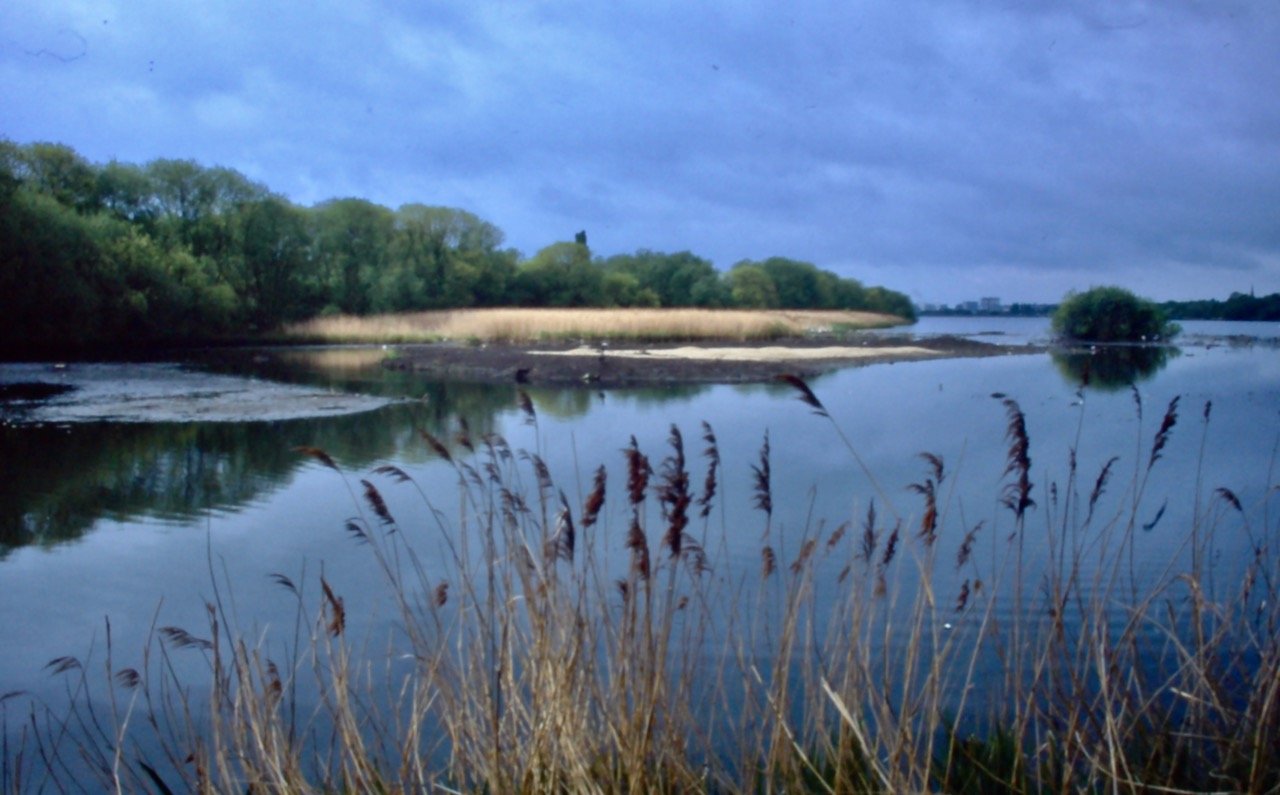What can Brent Reservoir expect in 2024?
Common tern will get new nesting rafts in 2024. Pic by Jenő Medgyesi.
As Cool Oak embarks on a new year of campaigning, here’s our update on where we are on the big issues.
RESERVOIR DRAINAGE
As many know, the reservoir is currently being drained for dam repairs by Canal and River Trust (CRT). It will be refilled in late February in time for the new breeding season. Fish are being netted and rescued. Native species will be returned in the spring. The statutory repairs are costing approx £750k.
CRT has also made much about the opportunity it presents for rubbish clearance from the reservoir bed. The reality is only a fraction of the budget is being spent on this. Contractors are currently booked in for only 5-6 days of debris removal across the whole winter. To top up its resources, CRT has invited the public to crowd-fund £15k towards the clean-up and get involved as volunteers, but the treacherous deep silt means efforts will be confined to a few shoreline litter-picking events. The upshot is, contrary to the story being told, most of the rubbish and plastics threatening the protected marshes will remain untouched.
Cool Oak understands the silt presents major logistical challenges when it comes to debris removal, but if so, CRT should be honest about what is possible and not present a misleading narrative now repeated in local and national media.
The pollution of the fragile marshes by plastics, toxic silt and moderate water quality remains a fundamental threat to Brent Reservoir, a cornerstone Site of Special Scientific Interest (SSSI) in London.
WETLANDS RESTORATION
Since 2021 when Cool Oak urged CRT to act on the plight of the reservoir, the organisation has found pockets of funding for various small scale projects including debris removal, reshaping overgrown reed line, tern raft replacement, and self-seeded tree coppicing. In November last year - after the publication of the ambitious new Welsh Harp Joint Vision - it finally started making plans for some major works. The trust’s intention is to draw up comprehensive costings and methodology for each project making them ‘oven-ready’ for third-party funding opportunities.
The first of these is the partial restoration of the old wetlands in the north-west corner of the north marsh - a matrix of canals and islands and reed bed that has lacked management for decades. The second is tree coppicing, reed enhancement, and the restoration of a wader scrape and mudflat in the SE corner of the east marsh. (Initial tree coppicing and stump treatment works plus the first steps in a new comprehensive flora and fauna survey take place in the east marsh this month.)
Both of these are major wetlands improvements to support species protected under the SSSI citation. In this CRT should be applauded for their new commitment to the reservoir after years of neglect. Cool Oak is proud to have helped kickstart a new period of restoration.
Wader scrape and mudflat in the East Marsh in the early 1990s before vegetation took over.
SILK STREAM BRIDGE
Whereas CRT have recently acknowledged the importance of reclaiming the overgrown wetlands, Barnet Council and developers Barratt seem hell-bent on destroying a large section of it in the north marsh with a 200m footbridge linking new private housing with the playing fields. Both could pull back from the brink even at this late stage and reroute or abandon the project, but are digging their heels in. Cool Oak says Natural England must use their veto to insist on major ecological mitigation around the site if the bridge goes ahead, but even so, the SSSI will be unnecessarily damaged in the process, in contravention of environmental law.
Amendments to the bridge design mean a new round of public consultation in the next few weeks. It is an opportunity bring the reality of this damaging construction project to people’s attention once again. Cool Oak’s battle to influence the outcome of the Silk Stream Bridge project goes on.
WATER QUALITY
Many were shocked by Thames Water’s revelation at the end of 2023 that they had ‘discovered’ a new group of outfalls and storm overflows that enter the Silk Stream and River Brent and flow directly towards the reservoir. Cool Oak’s conversations with the Environment Agency (EA) have clarified that all are previously known potential polluters and the reason they have ‘come online’ is that are being fitted with new monitoring devices which should give more data on any incidents.
It goes without saying, water quality entering the reservoir remains a key issue. Urban runoff heavily pollutes both the Silk Stream and Dollis Brook/River Brent, and sewage effluence and debris regularly spills into SSSI land around the trash screens. This month CRT intend to remove several fallen trees across the river channel below the Brent trash screen to improve water flow and stop the build-up and overtopping of debris. They also remain in talks with EA regarding ongoing maintenance of the trash screens.
Cool Oak urges EA to maintain pressure on Thames Water to continue to improve the inflow to the reservoir, in particular the protected marshes. You can track the live progress of the outfall and overflow monitoring on this interactive online map.
TERN RAFTS
Common Tern is a key breeding bird species in spring-summer at the Welsh Harp. Their breeding rafts on the east marsh have fallen into disrepair and breeding numbers have dropped dramatically from a high of over forty nesting pairs to just two last year.
In December the first batch of old rafts were removed by CRT to be replaced by a new in the spring in a new initiative between CRT and Welsh Harp Conservation Group.
This is a great step forward for a summer visitor synonymous with Brent Reservoir. Cool Oak salutes the funding and logistical efforts to make this happen.
The rough grassland and scrub next to West Hendon playing fields is a key natural habitat for wildlife that needs protecting.
WEST HENDON PLAYING FIELDS
Barnet Council and Arup are in the early stages of a major redevelopment plan for the West Hendon Playing Fields area. In December, Cool Oak was invited to meet the architects and officers involved. We voiced our concerns about: the proximity of the works to the SSSI and the current blurring of the boundaries between the two; preserving the informality of the open spaces; keeping sensitive wildlife areas protected; restricting plans for artificial pitches to avoid the damaging spread of microplastics; ensuring a full flora and fauna inventory is drawn up before work commences; and dealing with the ‘night time economy’ and anti-social behaviour.
There is a long way to go before a spade goes in the ground, but Cool Oak is happy to be a consulted voice in the process.
BASIC MAINTENANCE AND VOLUNTEERING
Path clearance, reed cutting, invasives removal and canal restoration are just some of the year-round activities that take place around the reservoir. Our friends at Friends of the Welsh Harp also run regular litter-picking and conservation events.
If you are inspired to join any of the ongoing volunteer opportunities or support other areas of our work, get in touch.



